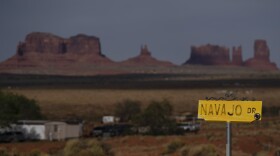-
Fights over public lands aren’t unusual in the West. But Utah is now going straight to the U.S. Supreme Court to wrest control of 18.5 million acres of federal land.
-
The 6-3 ruling cleared the path to enforce outdoor sleeping and public camping laws. It could make it tougher to provide legal help to an already vulnerable population.
-
On Monday, the nation's highest court said it will review an appeals court ruling that overturned the approval issued by the Surface Transportation Board for the Uinta Basin Railway. Arguments will be in the fall.
-
As part of his campaign, Ramaswamy released a list of 16 people he'd name to either the high court or appeals court judgeships if he becomes president.
-
“Unlike some other institutions across the country, Utah public colleges and universities do not consider an applicant’s race or ethnicity when making admissions decisions," said a Utah System of Higher Ed spokesperson.
-
The court found that the federal government isn't responsible for securing that water for the 170,000 tribal members who live there.
-
A year after the constitutional right to abortion was overturned by the U.S. Supreme Court, Planned Parenthood of Utah is hunkered down in two legal battles to protect abortion rights in the state.
-
One year after the Supreme Court changed the landscape of abortion, Utah’s laws remain tied up in courts. The president of Pro-Life Utah is confident though that the state will prevail.
-
States that draw water from the river — Arizona, Nevada and Colorado — and water districts in California had urged the court to decide for them, and that's what the justices did in a 5-4 ruling.
-
Native American nations say the Supreme Court has reaffirmed their power to withstand threats from states.
-
“They had the ability to take away our children, again, from our people. And they did the right thing,” said Darren Parry, former chairman of the Northwest Band of the Shoshone Nation.
-
The court left in place the 1978 Indian Child Welfare Act, which was enacted to address concerns that Native children were being separated from their families and, too frequently, placed in non-Native homes.
Play Live Radio
Next Up:
0:00
0:00
Available On Air Stations












